
Outside In Gallery
Transition, Adaptation and Action in Padilla Bay
Transición, adaptación y acción en la Bahía de Padilla
October 14, 2023 - January 21, 2024
Presented by / Presentado por: Padilla Bay National Estuarine Research Reserve. These individuals developed the exhibition: Susan Wood (Education Coordinator), Annie England (Educator), Roger Fuller (Natural Resource Stewardship Coordinator), and as well as other staff and the young artists of our Art and Science Camp.
In collaboration with / En colaboración con: Helena Sarah Richardson (Artist), David Frye (Fabricator), Brooke Love (Scientist), Western Washington University, and J.B. Silvers (Fabricator).
Follow the Swinomish Channel northward and you’ll find yourself in Padilla Bay, a productive expanse of shallow water, mudflat, saltmarsh, and eelgrass meadow. The Padilla Bay National Estuarine Research Reserve is a center of research, restoration, and education about this valuable estuary. The eelgrass meadow, the largest in Washington, teems with life, including hundreds of thousands of wintering waterfowl, masses of economically important fish and crab, and a complex world of benthic invertebrates. The Reserve hosts researchers from around the country and serves tens of thousands of school children and adults eager to explore the beach, trails, and Interpretive Center. Free exhibits feature a children's hands-on room and aquariums with touch pool.
This scene of transition – from land to sea, from salt to fresh – is now facing changes that threaten its ecological health and diversity. For residents and visitors of Skagit County, Padilla Bay is part of our watershed and both nourished and impacted by our daily choices. Rivers, streams, and coastal currents deliver nourishing fresh and salt water, sediment, nutrients, food, and migrating animals like salmon. Those same flows and currents deliver pollutants and other impacts from our cars, yards, septic fields, roads, armored shorelines, farms, businesses, and clearcuts. Carbon emissions from burning oil, gas, and coal are causing ocean acidification and climate change that raises sea levels and affects temperature and weather. Our actions as individuals, communities, and a larger society determine the extent of impacts and whether Padilla Bay’s non-human residents can adapt and continue to thrive.
***
Siga el Canal Swinomish hacia el norte y se encontrará en la Bahía de Padilla, una vastedad productiva de aguas llanas, humedales, marismas e hierba de anguila. La Reserva Nacional de Investigación Estuarina de la Bahía de Padilla es un centro de investigación, restauración y educación sobre este estuario valioso. La hierba de anguila más grande de Washington rebosa de vida con cientos de miles de aves acuáticas que invernan, grandes cantidades de peces y cangrejos comercialmente valiosos y un ecosistema complejo de invertebrados bentónicos. La Reserva acoge a investigadores de todo el país y atiende a decenas de miles de estudiantes y adultos entusiasmados a explorar la playa, los senderos y el Centro de Interpretación. Las exposiciones gratuitas incluyen una zona con actividades prácticas para niños y acuarios con piscinas táctiles.
Este escenario de transición –de la tierra al mar, de las aguas saladas a las aguas dulces– se enfrenta ahora a cambios que amenazan su salud y ecológica diversidad. La Bahía de Padilla, para los residentes y visitantes del condado de Skagit, forma parte de nuestra cuenca y se nutre y se ve afectada por nuestras decisiones cotidianas. Los ríos, arroyos y corrientes costeras aportan agua dulce y salada, sedimentos, nutrientes, alimentos y animales migratorios como el salmón. Esos mismos flujos y corrientes también transportan contaminantes y otros residuos de nuestros autos, patios, pozos sépticos, carreteras, acorazamiento costero, granjas, empresas y tala de bosques. Las emisiones de carbono procedentes de la combustión de petróleo, gas y carbón están provocando el aumento de la acidez de los océanos y el cambio climático que eleva el nivel del mar y afecta a la temperatura y el clima. El alcance de los impactos y la posibilidad de que los habitantes no humanos de la Bahía de Padilla para adaptarse y sobrevivir depende de nuestras decisiones como individuos, comunidades y la sociedad en su conjunto.
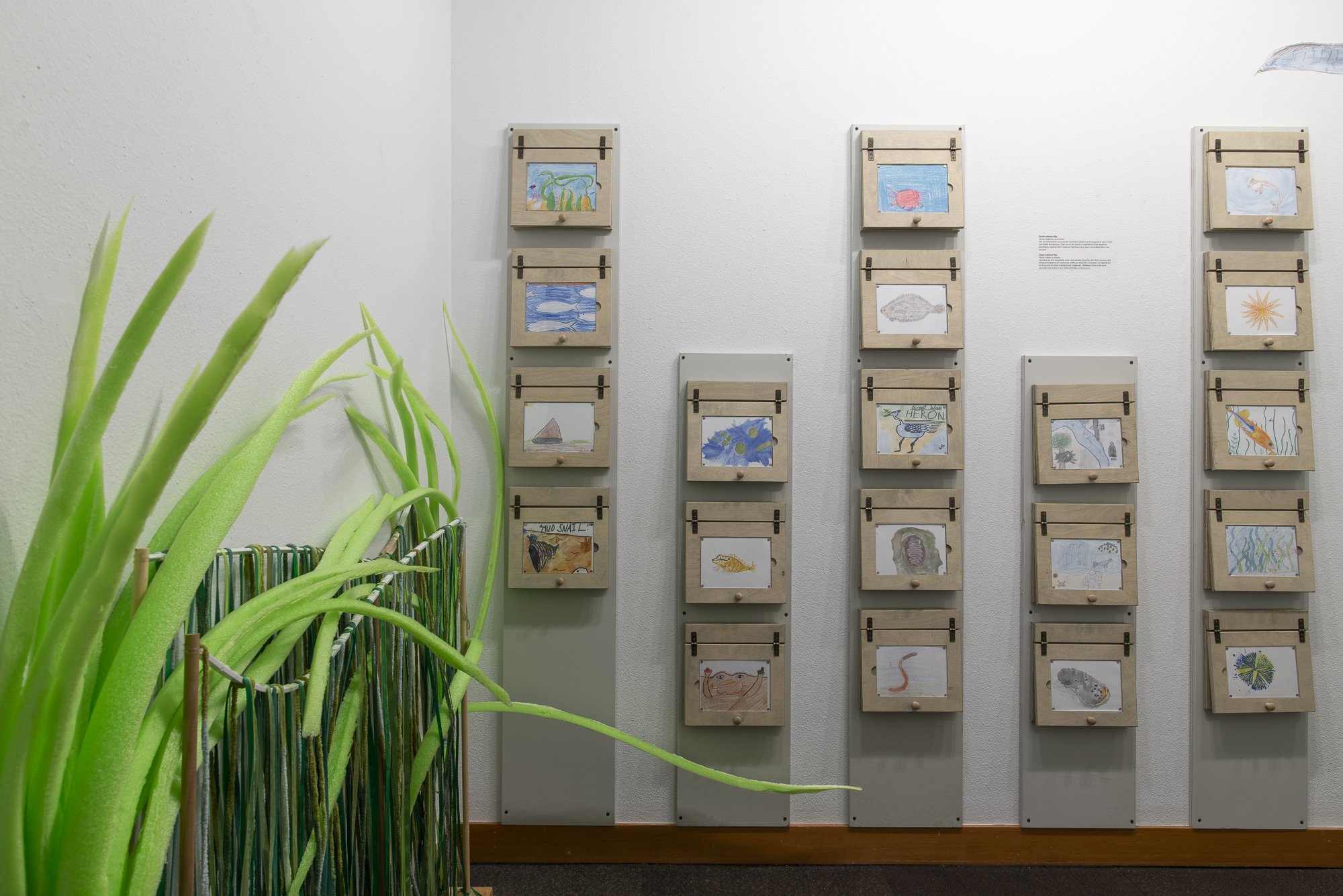
Estuary Animal Flips Various mediums and Artists The art collected for these panels came from children and young adults who visited the Padilla Bay Reserve. Their trip to the beach or experience in the aquarium doubtlessly inspired their creations. You can visit the Expression Exchange to flip these up to learn more about life in the estuary. Photo Credit: Tim Mickleburgh

The art collected for these panels came from children and young adults who visited the Padilla Bay Reserve. Their trip to the beach or experience in the aquarium doubtlessly inspired their creations. You can visit the Expression Exchange to flip these up to learn more about life in the estuary. Photo Credit: Tim Mickleburgh
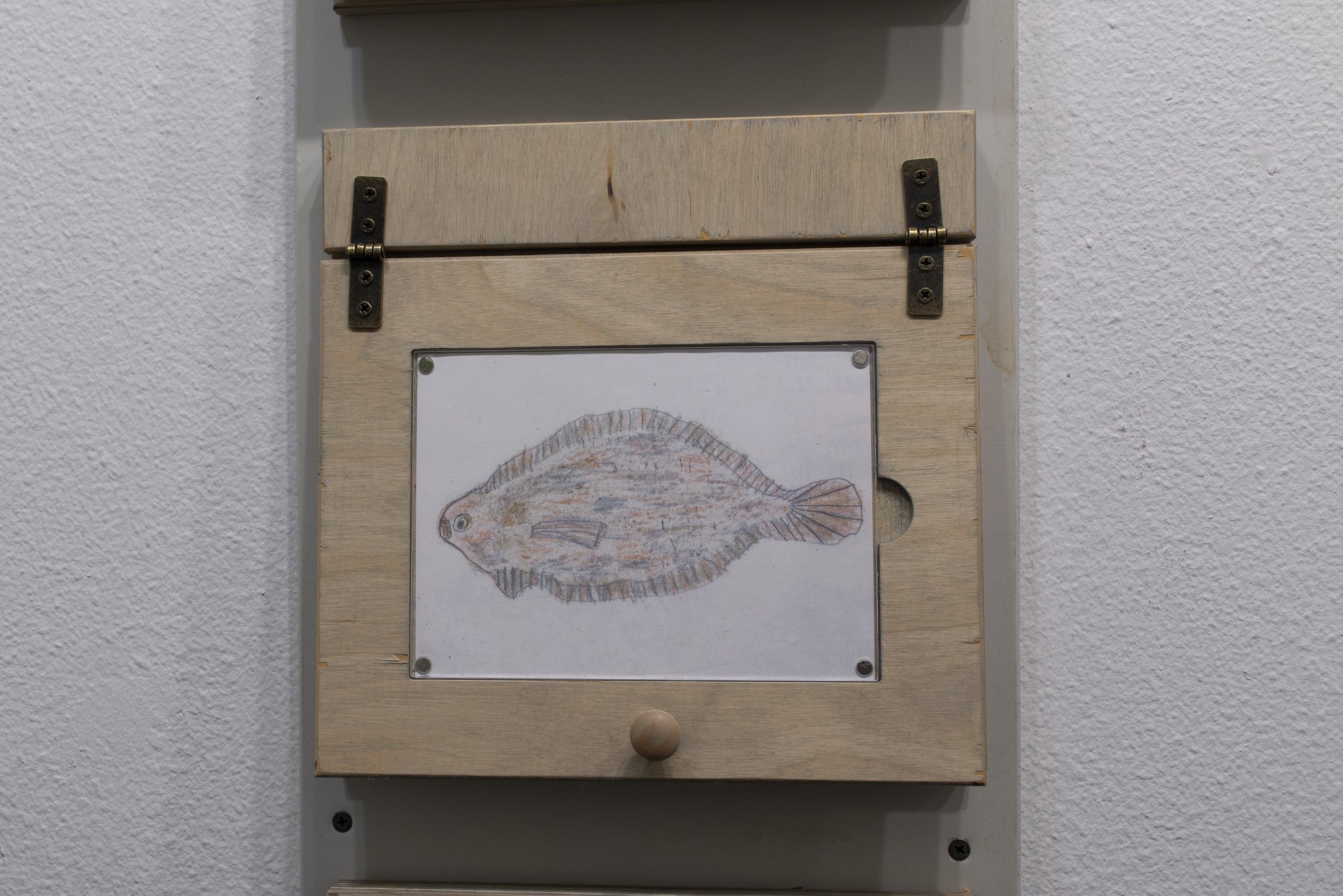
The art collected for these panels came from children and young adults who visited the Padilla Bay Reserve. Their trip to the beach or experience in the aquarium doubtlessly inspired their creations. You can visit the Expression Exchange to flip these up to learn more about life in the estuary. Photo Credit: Tim Mickleburgh

The art collected for these panels came from children and young adults who visited the Padilla Bay Reserve. Their trip to the beach or experience in the aquarium doubtlessly inspired their creations. You can visit the Expression Exchange to flip these up to learn more about life in the estuary. Photo Credit: Tim Mickleburgh

The art collected for these panels came from children and young adults who visited the Padilla Bay Reserve. Their trip to the beach or experience in the aquarium doubtlessly inspired their creations. You can visit the Expression Exchange to flip these up to learn more about life in the estuary. Photo Credit: Tim Mickleburgh
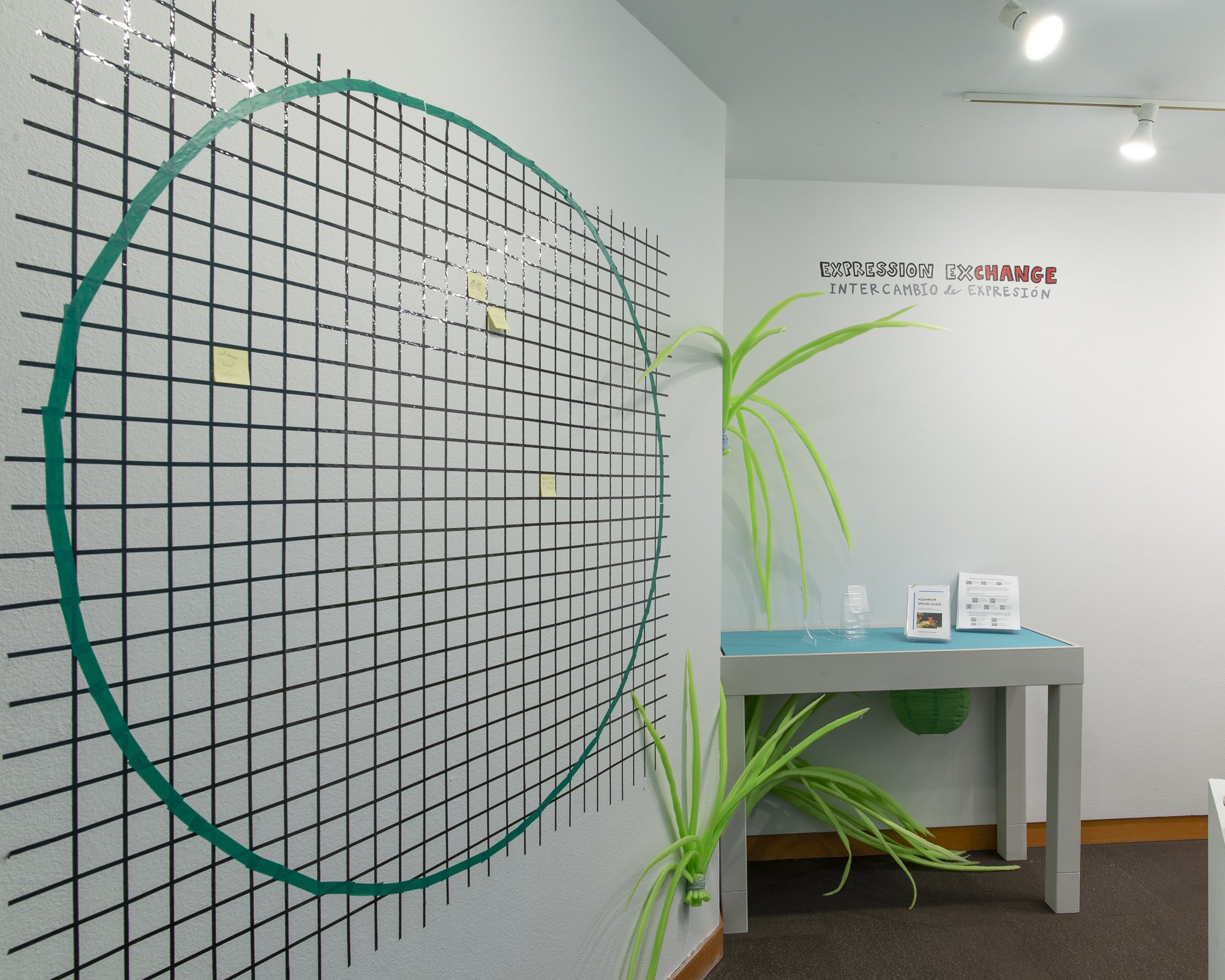
Pieces of Resilience: What part will you play in the puzzle? Add to our community art display! Draw or write what you think represents resilience. Perhaps you’d like to take a pledge for a specific action and share it with others, or maybe you want to write a poem that explores the many ways our ecosystems and communities are resilient in the midst of climate change. Your response might be abstract, or posed as a question that you want to explore here. We welcome all of your contributions to this display in the Expression Exchange. Photo Credit: Tim Mickleburgh
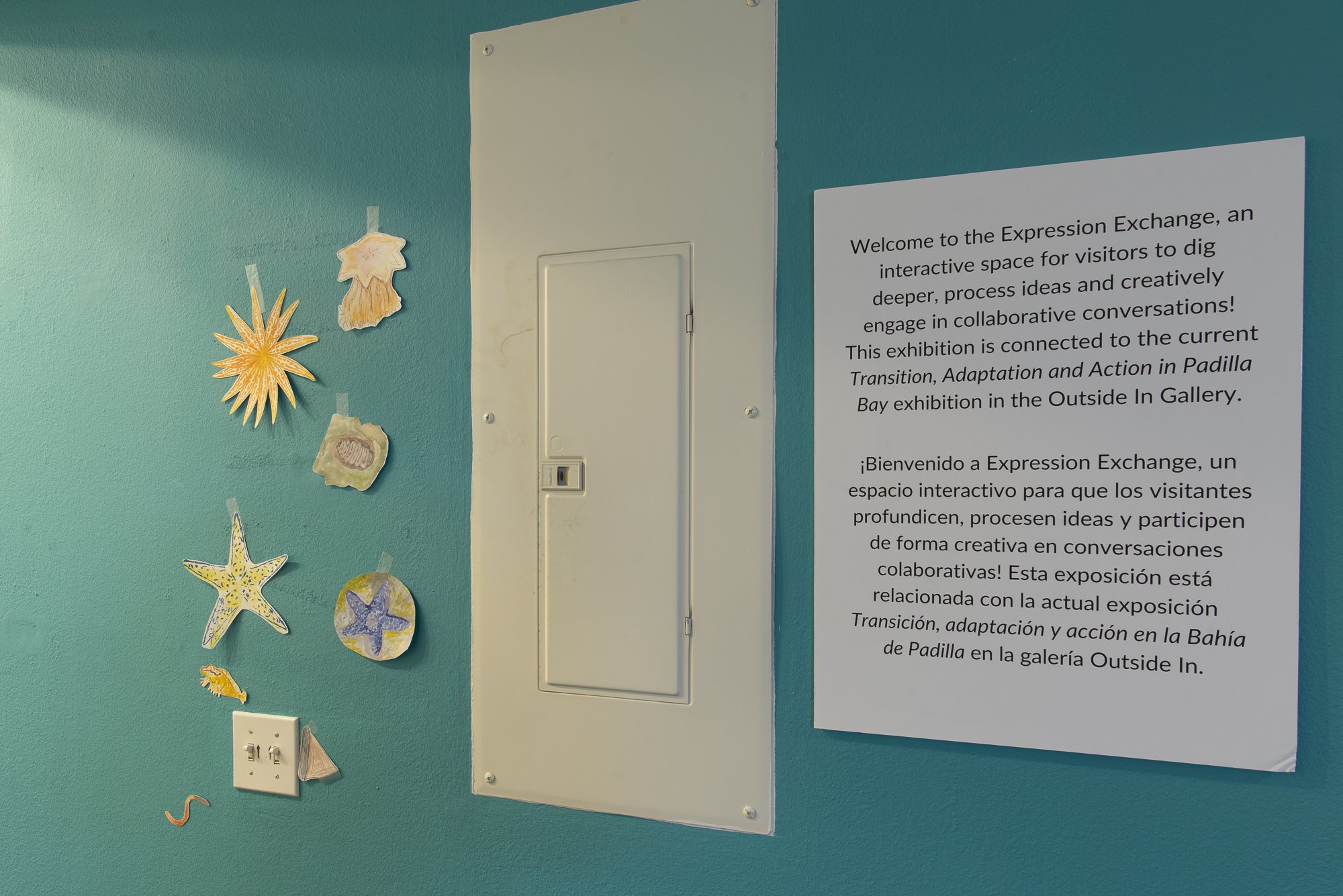
Collaborative Estuary Mural: In the Expression Exchange we invite you to create an addition to our estuary! Please use the provided supplies to draw your own addition and tape it to the community mural. Photo Credit: Tim Mickleburgh

Title Wall of the Outside In Gallery. Photo Credit: Tim Mickleburgh
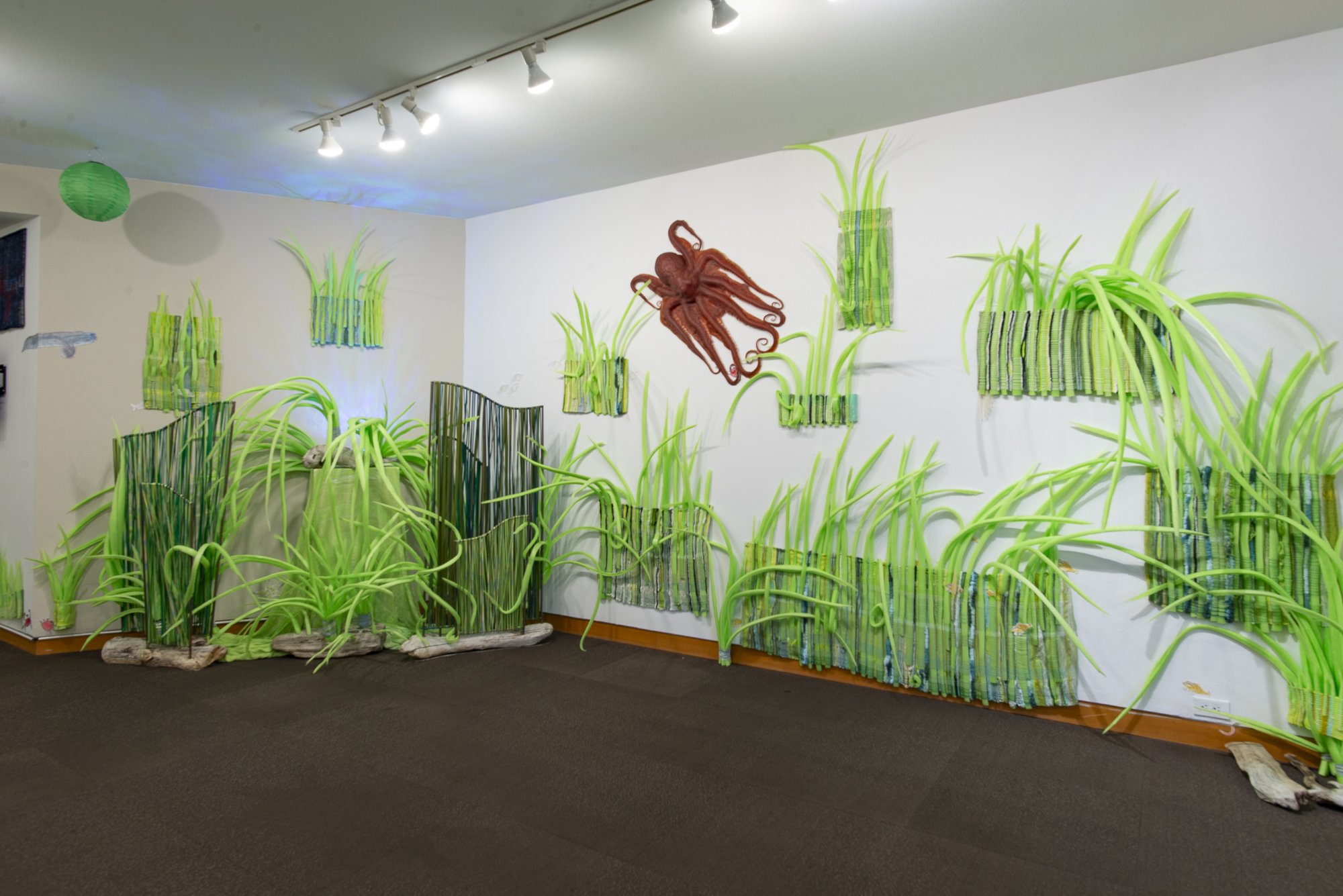
Virtual eelgrass meadow created in the Outside In Gallery. Photo Credit: Tim Mickleburgh
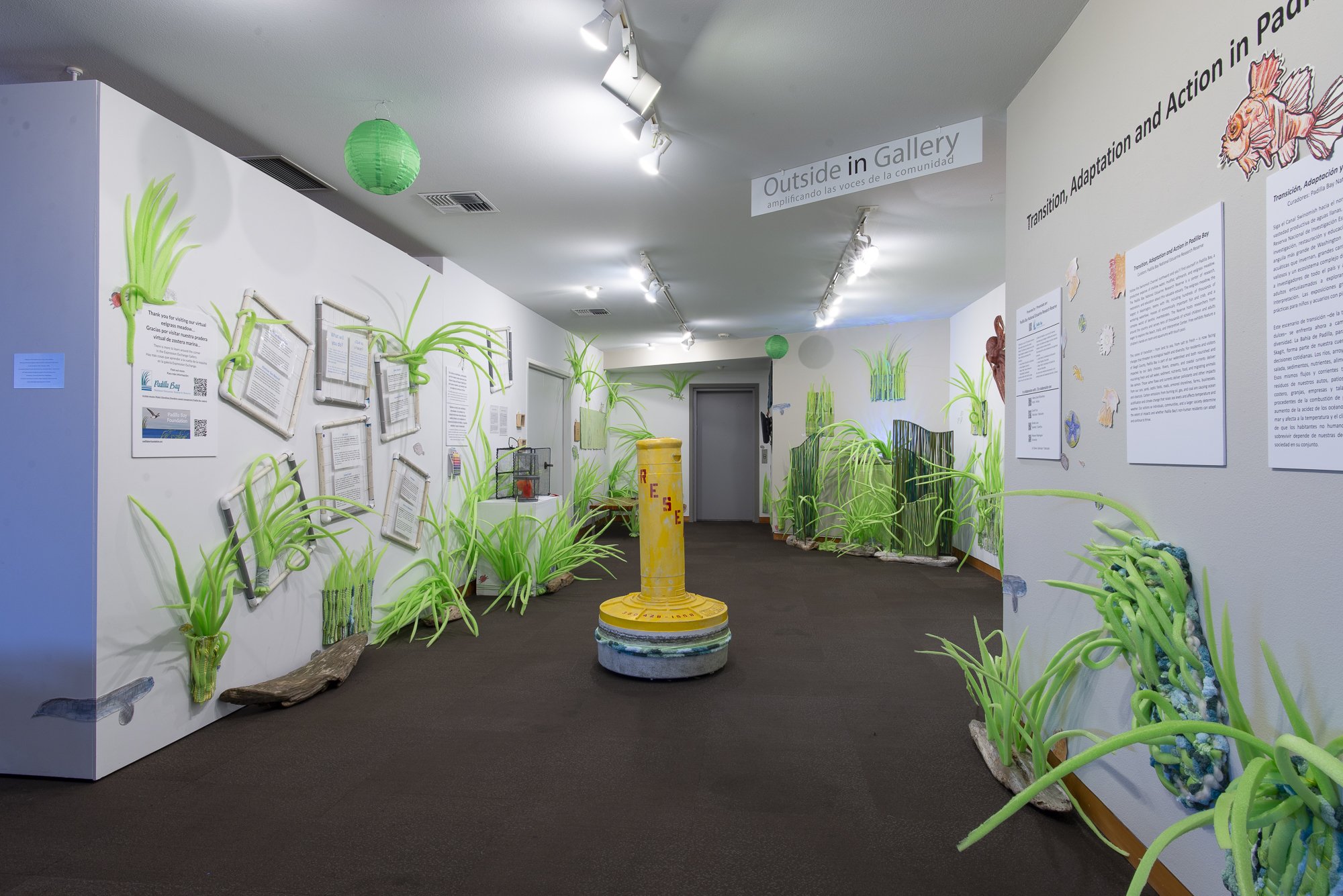
View of the entire Outside In Gallery. Photo Credit: Tim Mickleburgh
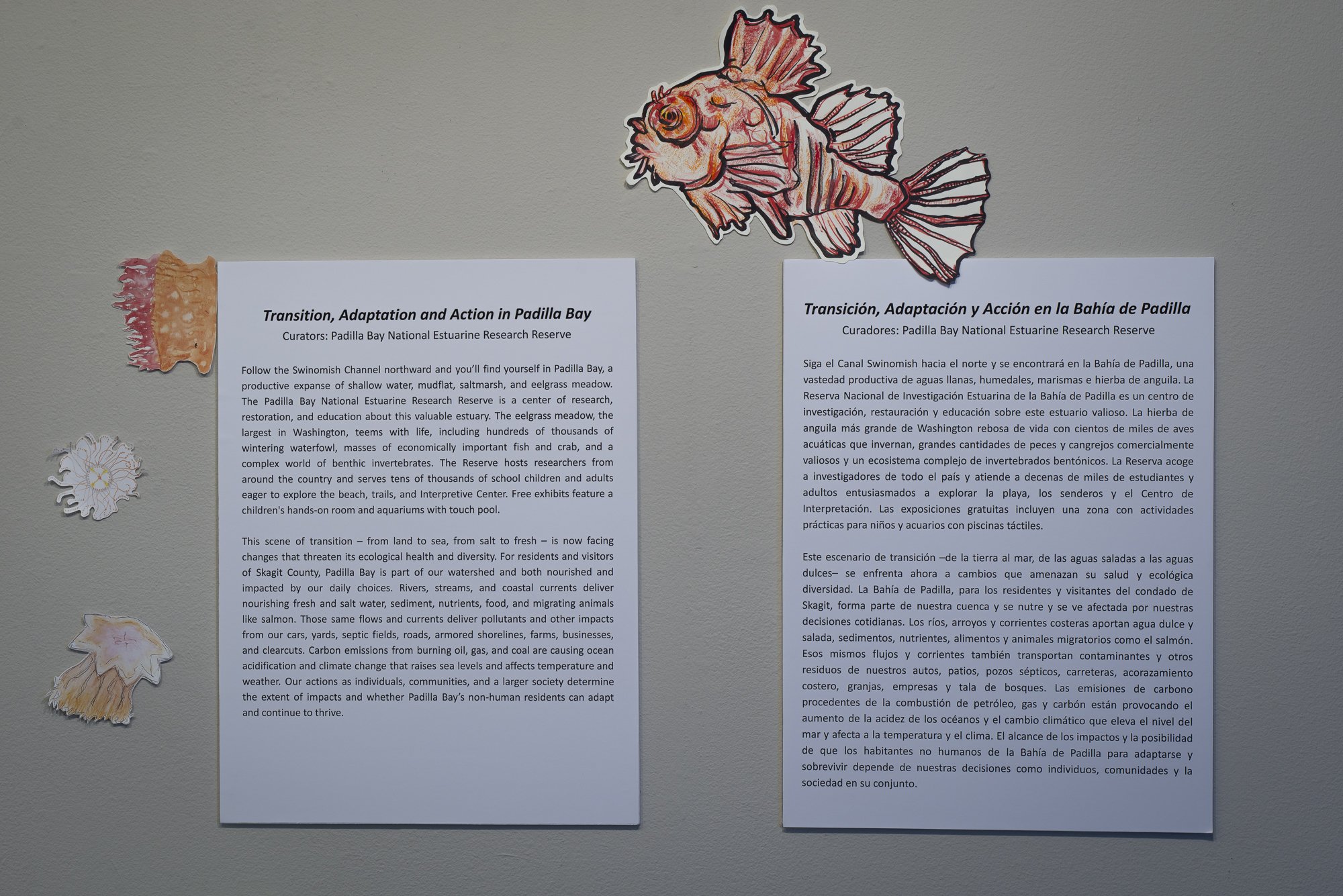
Title description for the Outside In Gallery. Photo Credit: Tim Mickleburgh
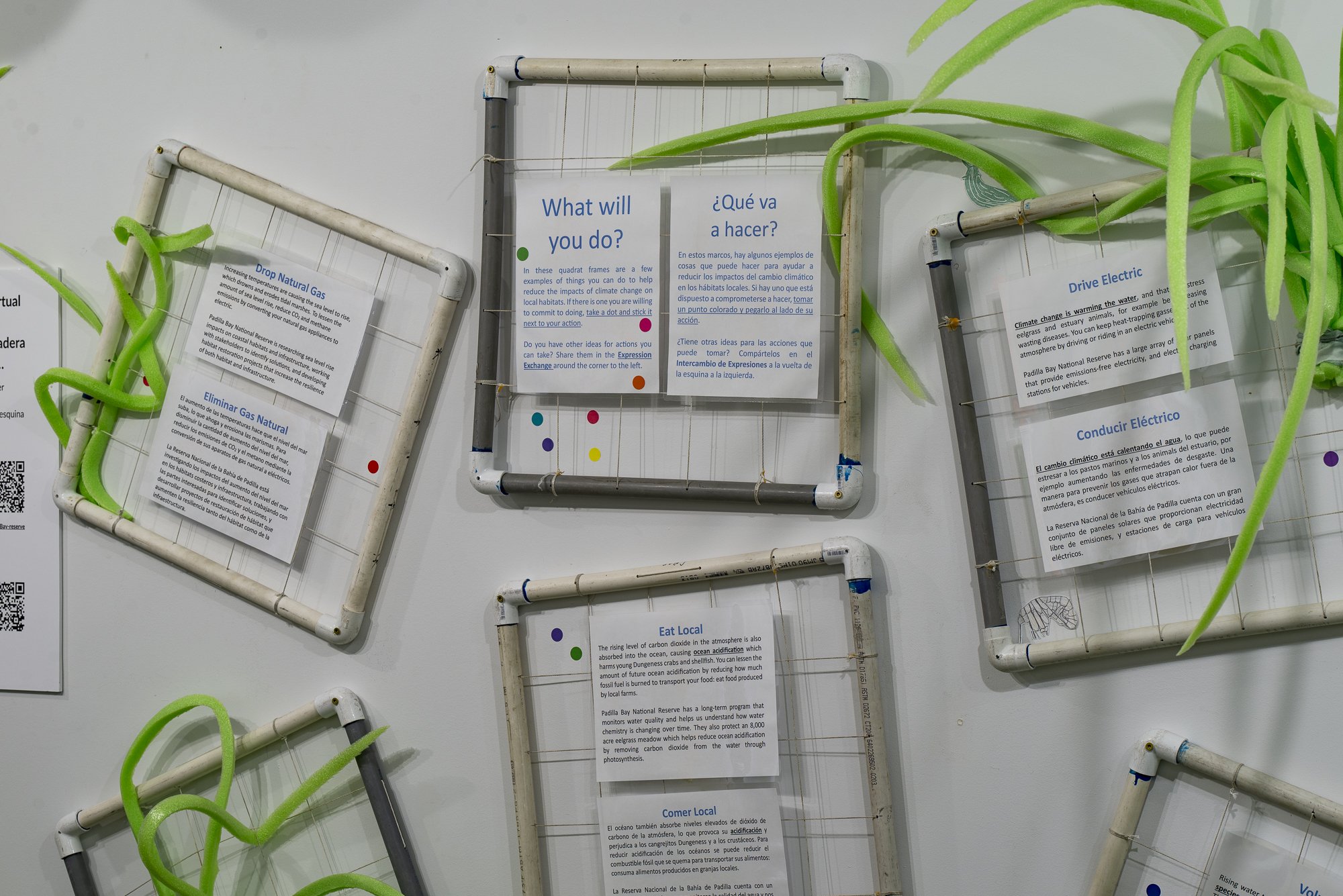
An invitation to take action. Photo Credit: Tim Mickleburgh
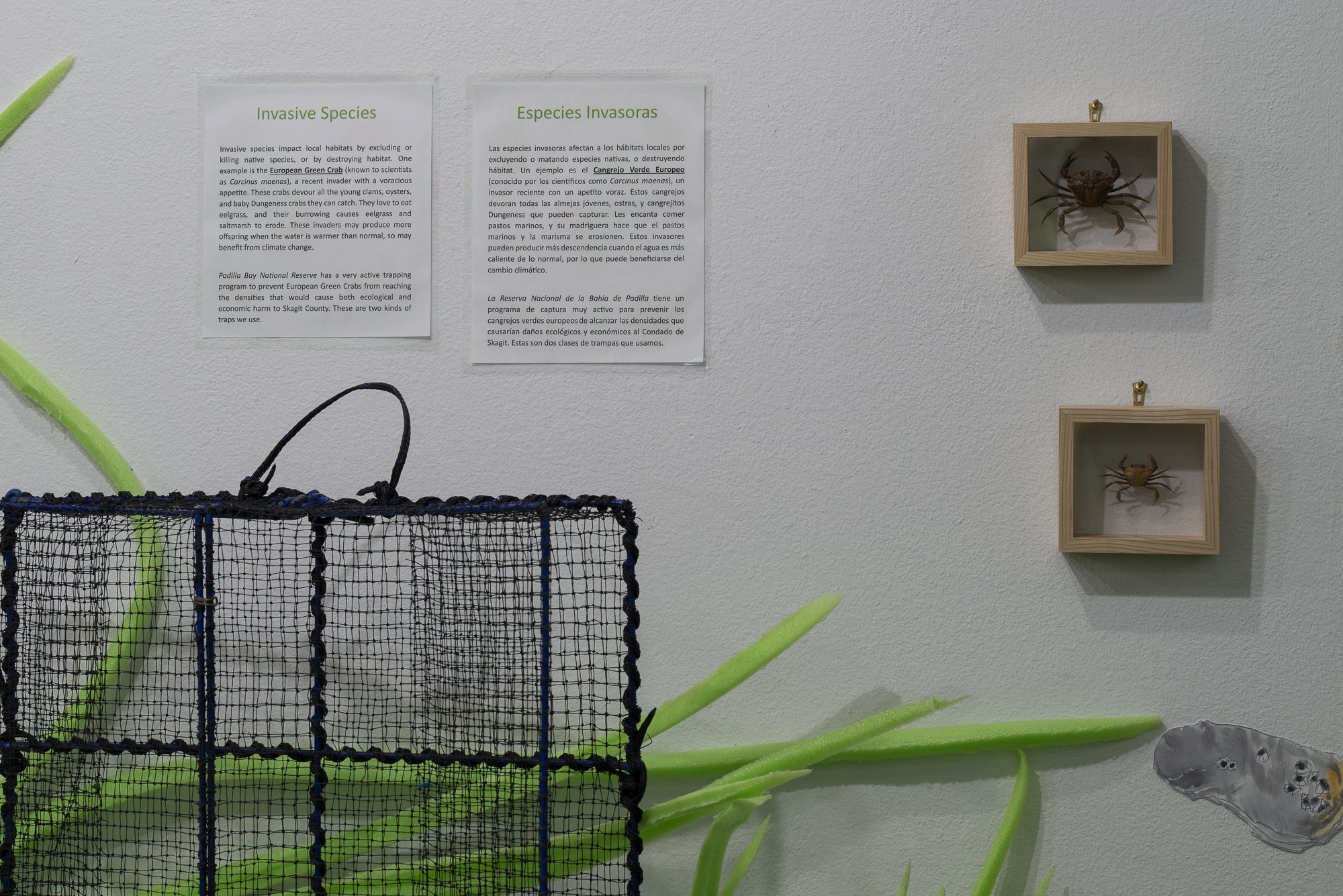
Invasive species display. Photo Credit: Tim Mickleburgh
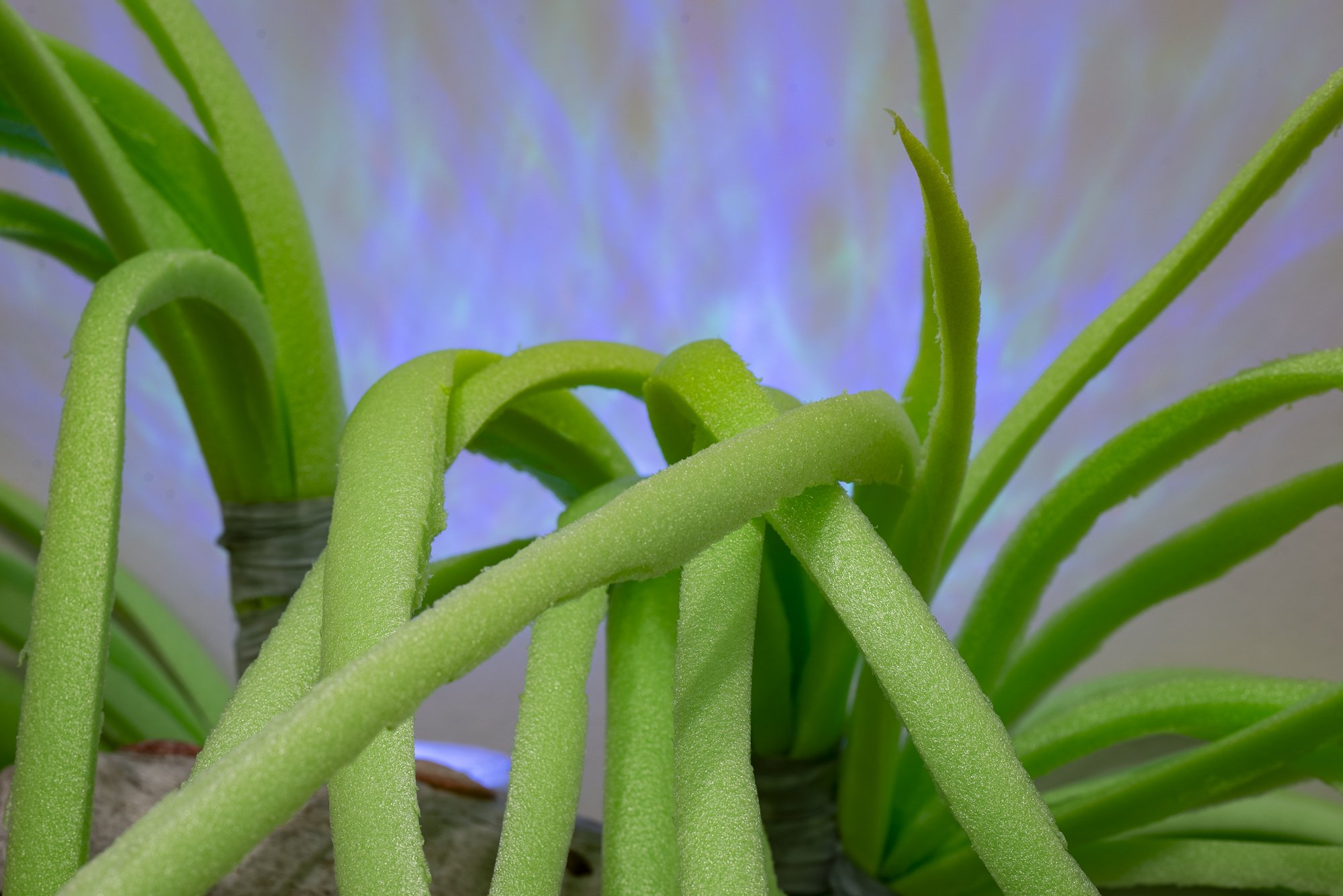
Close-up of eelgrass. Photo Credit: Tim Mickleburgh
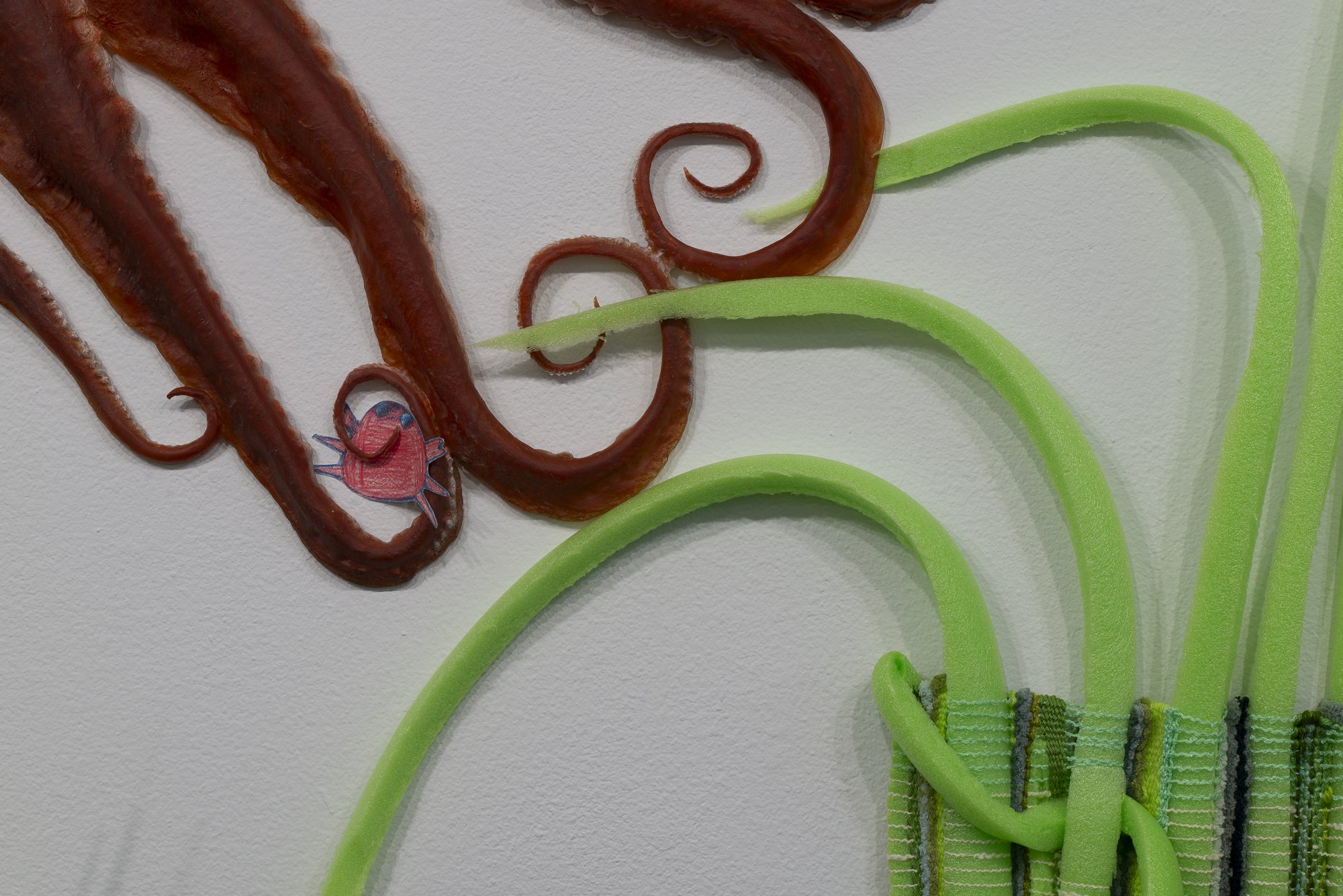
Close-up of octopus, crab and eelgrass. Photo Credit: Tim Mickleburgh

Weaving in the Outside In gallery. Photo Credit: Tim Mickleburgh

Virtual eelgrass meadow created in the Outside In Gallery. Photo Credit: Tim Mickleburgh
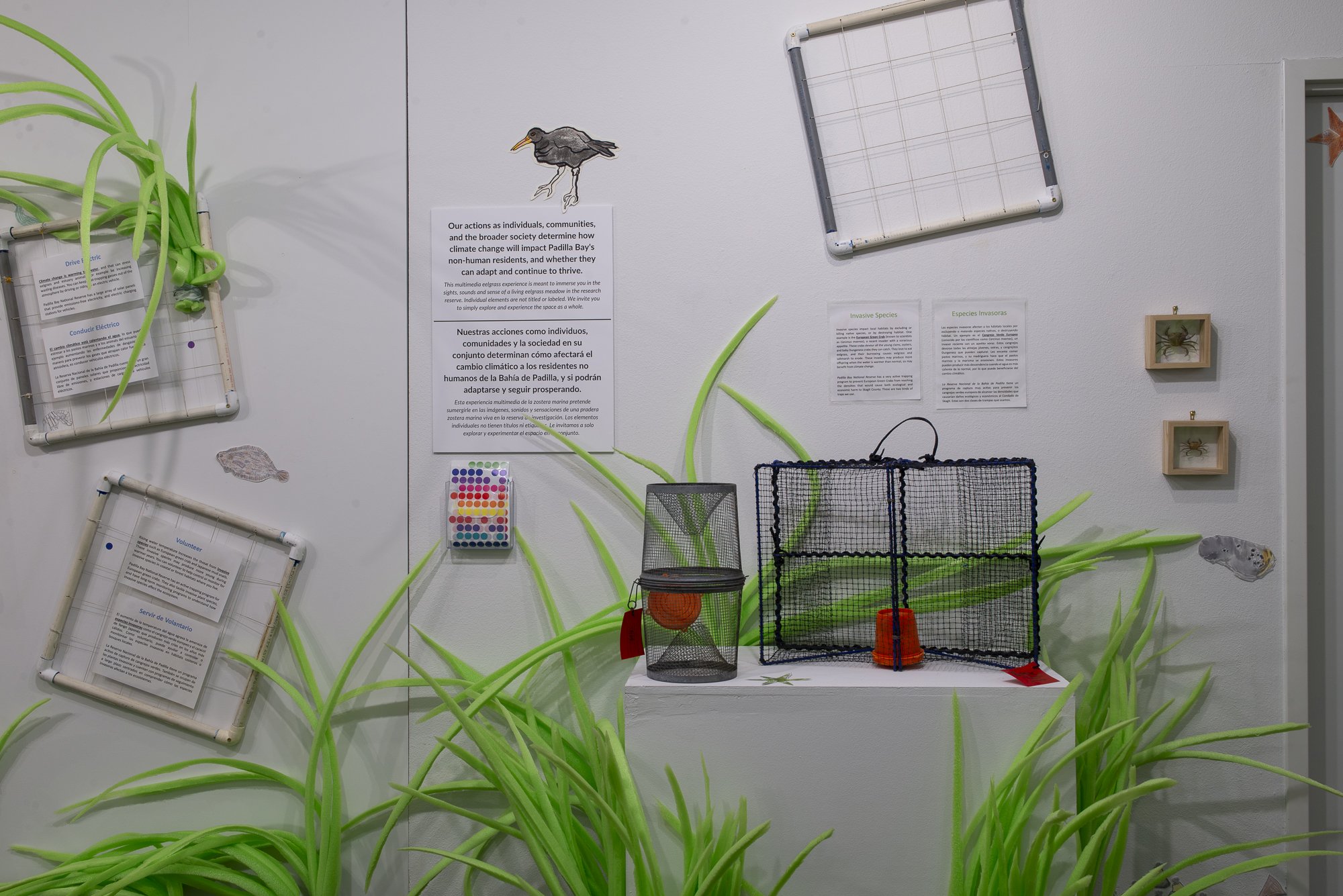
Virtual eelgrass meadow created in the Outside In Gallery. Photo Credit: Tim Mickleburgh

Close-up from the Outside In Gallery. Photo Credit: Tim Mickleburgh

Photo credit: Padilla Bay National Estuarine Research Reserve

Photo credit: Padilla Bay National Estuarine Research Reserve

Photo credit: Padilla Bay National Estuarine Research Reserve

Photo credit: Padilla Bay National Estuarine Research Reserve
The Outside In Gallery is MoNA’s Education Gallery, which is dedicated to amplifying the voices of our community. If you are involved with a local organization or group and are interested in co-curating an exhibition in the Outside In Gallery, please contact us at education@museumofnwart.org. Visit the Outside In Gallery Archives to view other past exhibitions or visit our Upcoming Exhibitions page to see what’s coming up.
Outside In Gallery es la galería educativa de MoNA, que se dedica a amplificar las voces de nuestra comunidad. Si participa en una organización o grupo local y está interesado en organizar una exposición en Outside In Gallery, escribanos a education@museumofnwart.org. Visite las páginas Outside In Gallery Archives para ver las exposiciones pasadas o Upcoming Exhibitions page para ver las exposiciones que están por venir.
